We often see varieties of chocolate neatly arranged in so many stores, and the display is so tempting for customers walking by. Every shopping trip to a convenience or drug store is the same – make a rewarding selection between mainstream (and sometimes exotic) chocolate products. The tastings were set up in a way to acquire as much information as possible. The samples I acquired from CVS were: Ferrero Rocher hazelnut truffles (Italian), Hershey’s milk chocolate (American), Cadbury milk chocolate (English), Toblerone milk chocolate with nougat (Swiss), and Brookside dark chocolate with blueberries and almonds (American). The samples I acquired from Cardullo’s were: Niederegger’s Chocolate with marzipan (German), Truffettes milk chocolate covered marshmallows (French), Chuao Milk chocolate with potato chips (American/Venezuelan based), Vivra 65% dark with candied violets (American), and Taza 50% dark chocolate with guajillo chili. I recruited six tasters, and one taster was unable to try the dark chocolate samples, because dark chocolate disagrees with him. I expected that the tasters I shared various chocolate samples with would prefer more generic and familiar brands, such as the brands offered by CVS. However, by analyzing the results of my research done on various flavors of chocolate, it is apparent that my tasters generally preferred the less common chocolate bars without realizing it. This suggests that people do not put as much thought into their chocolate preferences as they really should be.
When organizing tastings for my research, I tried to get as many tasters as possible to taste my CVS and Cardullo’s products by themselves. There ended up being two groups of two, and two lone tasters. I wanted each person’s response to influence another person’s response as little as possible. Furthermore, none of the tasters were enrolled in Chocolate, Culture, and the Politics of Food. The students of the class now have an above average level of training for identifying specific tastes and smells in the chocolate, so I decided to test the abilities of non-chocolate scholars. I must admit that the whole tasting set-up was done by having in the back of my mind Barb Stuckey’s self-observation of her tasting skill after spending time working for the Mattson company. Barb excitedly recalls her “newfound skill” explaining that she “could take one bite of a food, consider it for a millisecond, and know exactly what it was missing that would give it an optimal taste (Stuckey 3)”. However, I was delighted to hear my tasters use descriptions for the samples, such as: dry, “varied texture”, “pop rock texture”, generic, “dull ‘thud’ sound”, sandy, “old book taste”, chalky, and/or matte colored.
The chocolate samples came from two different stores: CVS, and Cardullo’s Gourmet Shoppe, both in Harvard Square in Cambridge. Both stores are conveniently located in an area filled with people, some of whom may be hungry for a chocolate snack. Cardullo’s and CVS have their similarities, including the fact that they have their specific chocolate-seeking audiences. However, there is a difference between the chocolate-seeking audiences of Cardullo’s and CVS. Cardullo’s targets consumers of European origin and consumers with an interest in European culture, while CVS targets consumers that are not extremely fussy, and less willing to spend more for chocolate that would satisfy their cravings just as effectively. On a side note: the cost for all of the products between CVS and Cardullo’s totaled $46.34.
CVS’s chocolate is meant to “cater” to the general public. The store manager of the CVS location himself explained the ways in which the companies featured in the store cater to the general public. The confections sold at CVS are internationally recognized American and European brands whose confectionery styles do well with their plain chocolate, but also with commonly added flavors (some additional flavors include: caramel, nougat, nuts, and fruit). Hershey’s is a quintessential product at CVS, and must maintain their consumer loyalty with recognizable packaging, as well as producing creative ideas. For example, Hershey’s has designed resealable packaging to give their consumers a choice to eat some chocolate now and save the rest for later. A better alternative, rather than the consumer being forced to eat the entire product once it has been opened. Chocolate investigator, Kristy Leissle, begins her journal with, “Consider a hershey’s (sic) kiss. At once minimalist and iconic, the twist of silver foil sends a familiar flavor message to the brain, while the wrapper imparts nothing substantial about the chocolate (Leissle 22)”. When we see a chocolate product that is familiar to us, its iconic and memorable packaging prompts us to remember that what the product is. We also can trust familiar looking products to taste delicious if we decide to purchase them, rather than us risking the possibility of feeling like our money has been wasted on a bad tasting product.
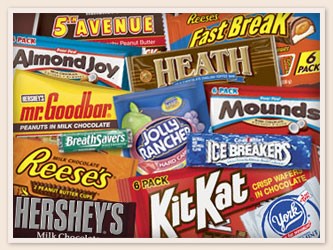
The products from CVS have important descriptions that set them apart from the products at Cardullo’s. There were a few products made with dark chocolate, but most of the products sold at CVS were made with milk chocolate. The most popular CVS product was a tie between Toblerone and Ferrero Rocher – all six tasters liked the two products equally. Four out of six tasters especially liked the chocolate center of the truffles. The Toblerone sample was described by four out of six tasters as “better than Hershey’s.” Three out of six tasters did not care for the Brookside product, two tasters thought the product was “okay,” and one taster loved the Brookside product so much that it won CVS over as her favorite store of the two for buying chocolate. Fun fact: Hershey acquired Brookside in 2011 (Schroeder). Hershey’s milk chocolate was the least popular CVS product, and Cadbury’s milk chocolate was described by every taster as “better than Hershey’s,” while Cadbury’s still was not the most popular CVS product.
Most of the products were neatly arranged by brand on the candy aisle. The rest of the products could be found on the end cap of the candy aisle on the side furthest away from the registers. The products on the end cap are known as the “deluxe chocolates.” The Deluxe brands included, but were not limited to Lindt and Chuao. Recall that I bought my Chuao potato chip milk chocolate at Cardullo’s. I had gone shopping at Cardullo’s before shopping at CVS, and was surprised to find the same type of Chuao bar in the Deluxe section of CVS. The Chuao bar was more hidden than the easily seen Cardullo’s Chuao bar, and it was two dollars cheaper at CVS. Perhaps, the Deluxe chocolates at CVS are placed so that the adventurous customers who already know about the products will know where to find them. The specific placement of products could be CVS’s precaution against scaring away most of their customers with expensive, daring flavors of chocolate as the first available chocolate snack.
Cardullo’s confections are meant to cater to people with more sophisticated tastes regarding confections. More specifically, Cardullo’s employees pointed out that the shoppe targets Europeans (and a few other ethnicities) who grew up with their featured products that are hard to find outside of their countries. The store manager of Cardullo’s herself explained that Cardullo’s products are special because they invoke a strong feeling of nostalgia among visitors/immigrants from various countries. You can find a wall stocked with Cadbury products, and Cadbury is one of the few iconic chocolate brands featured in the entire store. There is no chance of finding any products from Hershey when shopping at Cardullo’s. The American products featured at Cardullo’s tend to have avant-garde flavors. For example, Cardullo’s features Vosges, a Chicago based chocolate company. One of Vosges products at Cardullo’s is a chocolate bacon bar. What a combination!
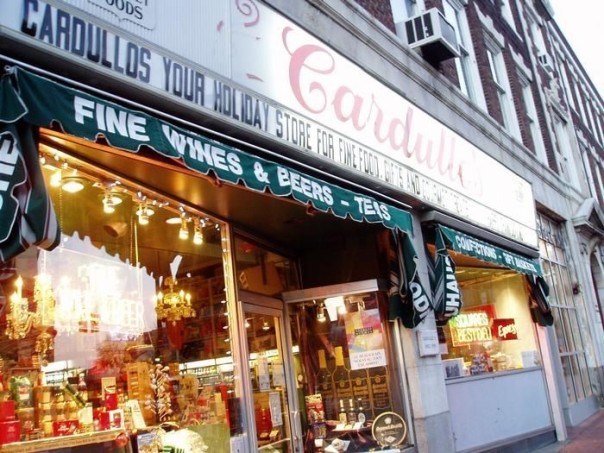
As preferred by five out of six tasters, Cardullo’s was the most popular of the two stores for chocolate shopping. The opportunity to taste new flavors of chocolate was a little intimidating, yet exciting to each of my chocolate tasters. Chloé, the chocolate connoisseur featured in Raising the Bar, voices her concern for a general lack of appreciation for chocolate variety, “[c]onsumers can be fickle and even dismissive when it comes to matters of taste… (Raising 147)”. The tasters were enthralled by the Vivra dark with violets, and this product was enjoyed by everyone that could try it. Four out of six people did not care for the Chuao potato chip chocolate, but the two other tasters enjoyed the sweet and salty combination within it. Niederegger’s marzipan milk chocolate was described by three tasters as “too sweet.” The other three tasters liked the marzipan milk chocolate, especially the consistency of the marzipan. When biting into the Truffettes milk chocolate covered marshmallows three tasters experienced them as “too chewy.” The other three tasters enjoyed the consistency of the marshmallow. Five tasters could try Taza’s Guajillo chili. Four tasters did not care for the guajillo chili infusion with the dark chocolate. One taster said that the Taza sample with guajillo chili was “awesome stuff!”
I would especially like to highlight the presence of Taza products at Cardullo’s. Taza is one of the few American chocolate companies with products for sale at Cardullo’s, and they happen to operate locally in Somerville, Massachusetts. What is special about Taza in comparison to many other American products is that the workers of Taza are interested in traditional, authentic Mexican chocolate-making methods. With a high demand in place for their products, Taza has had to find means of efficient production that would still allow for the presence of a Mexican quality surrounding the chocolate. By producing solid chocolate bars, Taza is aware that consumers are seeking a snack with traditional Mexican flavors, rather than traditional Mexican beverages. Taza’s YouTube channel serves as an efficient tool to connect with their customers on a more personal level than relying only on their website and word of mouth to deliver information to consumers. Taza wants its consumers to remember that there is still care involved with Taza’s chocolate making process, as their YouTube page’s introductory paragraph states that, “we hand-carve granite millstones to grind cacao… (TazaChocolate)”. The introductory video on their YouTube channel is an invitation for all who would like to catch a glimpse of the chocolate making process inside the factory:
https://www.youtube.com/watch?v=7tcA51tUOxU&feature=youtu.be
It is exciting to learn a little bit about another culture’s specific methods for creating products that are so similar, yet so different from what we are usually exposed to.
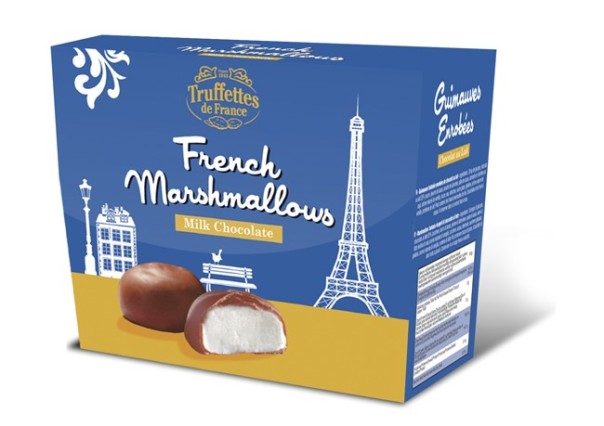
It is worth noting that every person has unique preferences for chocolate products, among all other products. There are people who prefer CVS products over Cardullo’s products, as astounding as it may sound to the people who appreciate variance in chocolate. Some people may enjoy every chocolate product presented to them, while others may only accept milk chocolate. Allergies to common foods such as nuts will skew a person’s preferences, because they must work around their health concerns when determining their favorite flavors to have with chocolate. The confections we looked at for this project demonstrate the many creative and culture-specific ideas that so many talented confectioners have cooked up since chocolate became more available around the world. Perhaps, if my tasters were all chocolate connoisseurs that my research would have yielded different results about chocolate preferences.
Works Cited
Leissle, Kristy. “Invisible West Africa.” Gastronomica: The Journal of Food and Culture 13.3(2013): 22-31. JSTOR [JSTOR]. Web. 6 May 2017. <http://www.jstor.org/stable/10.1525/gfc.2013.13.3.22>.
Schroeder, Eric. “Hershey to Buy Brookside Foods.” Food Business News. Sosland PublishingCo., 8 Dec. 2011. Web. 6 May 2017. <http://www.foodbusinessnews.net/News/NewsHome/Business News/2011/12/Hershey to buy Brookside Foods.aspx?cck>.
Slide-img20.jpeg. N.d. Hersheyindia.com. Web. 6 May 2017.
Stuckey, Barb. “What Are You Missing?” Introduction. Taste What You’re Missing: The Passionate Eater’s Guide to Getting More from Every Bite. New York: Free, 2012. 1-29. Print.
TazaChocolate. “Taza Chocolate.” YouTube. YouTube, 20 Jan. 2012. Web. 10 May 2017.<https://www.youtube.com/user/TazaChocolate>.
TazaChocolate. “The Taza Chocolate Story.” YouTube. YouTube, 20 Jan. 2012. Web. 10 May 2017. <https://www.youtube.com/watch?v=7tcA51tUOxU&feature=youtu.be>.
Terrio, Susan J. “People Without History.” Introduction. Crafting the Culture and History of French Chocolate. London, England: U of California, 2000. 1-22. Print.
TRUFFETTES DE FRANCE MARSHMALLOWS MILK CHOCOLATE. Digitalimage.Redstonefoods.com. Redstone Foods, n.d. Web. 8 May 2017.<http://redstonefoods.com/products/712331–truffettes-de-france-marshmallows-milk-chocolate>.
Williams, Pamela Sue., and Jim Eber. “To Market, To Market: Craftsmanship, Customer Education, and Flavor.” Raising the Bar: The Future of Fine Chocolate. Vancouver, BC: Wilmor Corporation, 2012. 143-209. Print.
V, Sonam. Cardullo’s Gourmet Shoppe. 2005. Yelp.com, Cambridge, MA. Yelp.com. Web. 10 May 2017. <https://www.yelp.com/biz_photos/cardullos-gourmet-shoppe-cambridge?select=-Cg_WKg2ExKzcEgzCuyLzQ>.
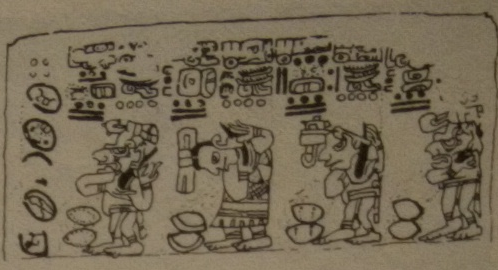
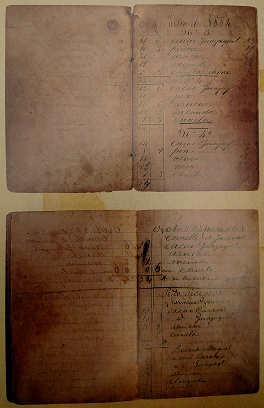
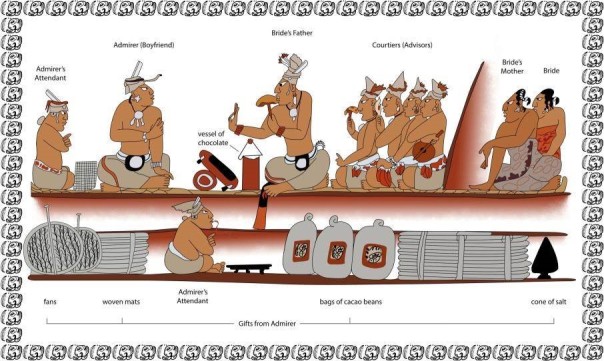

You must be logged in to post a comment.